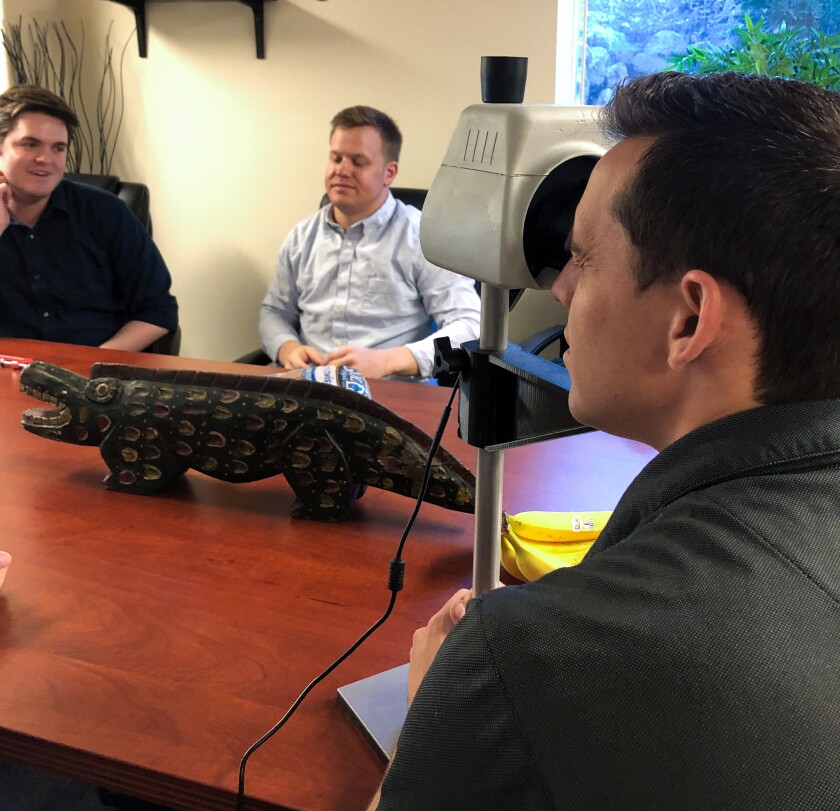According to the National Center for Biotechnology Information, vision loss can severely affect one's quality of life. For many, not having affordable eye care can hamper their ability to participate in everyday essential activities: cooking an evening meal, working a job, and reading signs and messages. Capstone recently assisted the nonprofit organization CharityVision in improving international eye care.
People need eye care, but it comes with a cost, and a high one. While some can pay the price, others simply cannot. This leaves low-income areas and third world countries at a disadvantage. The nonprofit organization CharityVision wanted to fix this.
Their solution started in a small room with a smartphone camera, a patient, and a nurse. They called it the “telemedicine model.” Nurses could snap a shot of a patient’s eye, send the image to a doctor, and receive professional advice on how to treat the patient. The simplicity and the economical advantage made eye appointments affordable and feasible for places that they had not been before. In addition, it supported local healthcare systems, rather than trying to replace them. Joshua Jackson, CharityVision Clinics Director, said, “It’s more about helping to establish the infrastructure on the ground there, so that even if we leave, twenty years later this thing is still going and still helping people there.”

As CharityVision progressed, they expanded upon the telemedicine model and replaced the smartphones with cameras on a swiveling stand, allowing nurses to take higher quality photos. However, there were still problems. As nurses tried to stabilize the camera stand, images came out more blurry. Natural lighting interfered, creating reflections and glares on eyes. The camera automatically eliminated red eye, a feature that helped identify eye cancer (if the flash highlights a red eye, nothing else occupies the blood-rich retina). CharityVision needed help to fix these issues, and in the summer of 2021, their BYU intern, Austin Hillam, knew what to suggest: Capstone.
BYU Capstone offered a team of five seniors in the Ira A. Fulton College of Engineering, including Hillam, to produce an inexpensive, quality camera design for a competitive cost. The student engineers who chose this project liked its appealing duality. “This was really the top of my list,” said electrical engineering alum Jared Awerkamp. “I was very interested in the multi-faceted components of it—the fact that there’s mechanical, electrical, and software, and the fact that there’s such a good motivation behind the work that’s being done.”
For the first semester of the school year, the team spent time designing two devices. Some team members focused on constructing a stand and camera that could take clear pictures of the eye. Others contributed to an app that could send those photos with annotations from the nurse or doctor. However, whether a student was a mechanical engineer or a computer engineer, each found overlapping areas to support their teammates. Someone on hardware may need electrical help, while another person might need to get additional perspective during a brainstorming session. Over time, this give-and-take led to better team unity.
“I think I got really lucky. Our team is amazing and everyone is very intelligent, very capable, and I think without every member on this team, this project would not be nearly as successful as what it turned out to be,” said computer engineering alum Ben Scott.

During the second semester, the team began to build the prototypes and worked together to solve any errors that occurred. They created a sturdy stand that would not need adjusting, allowing nurses to take stabilized photos. Around the camera itself, they crafted a circular eye-piece to fit any sized eye, sealing out any light interference. Finally, they programmed the camera to have a red eye option, giving doctors an additional cancer-screening resource. The team paired all of this with an app capable of annotations from the doctors and nurses.
CharityVision is now in the process of implementing these new devices in various locations around the world, making their eye care feasible and accurate. Although the capstone team spent a year on the project, its impact will last through the many years to come. Each team member can now say they assisted a nonprofit in keeping their system inexpensive and capable. Capable of improving international eye care. Capable of enabling local healthcare systems. Capable of helping those in need.